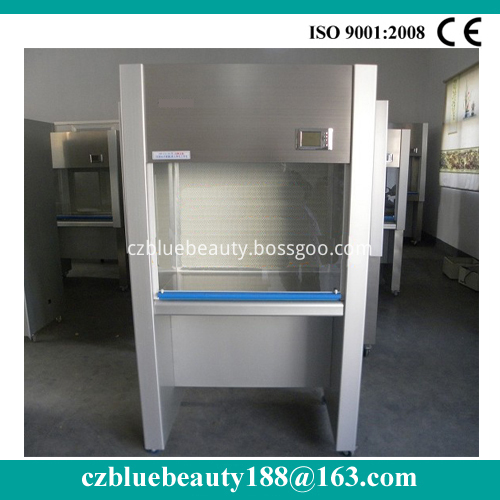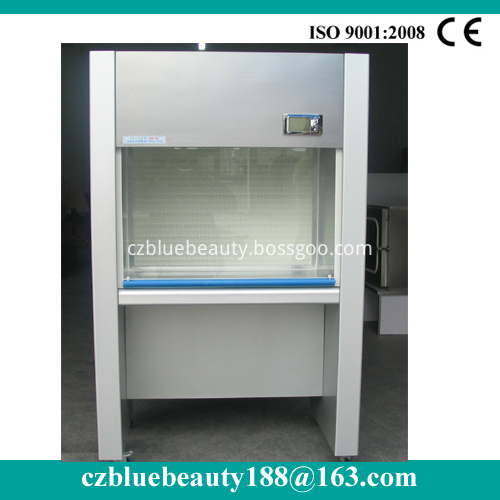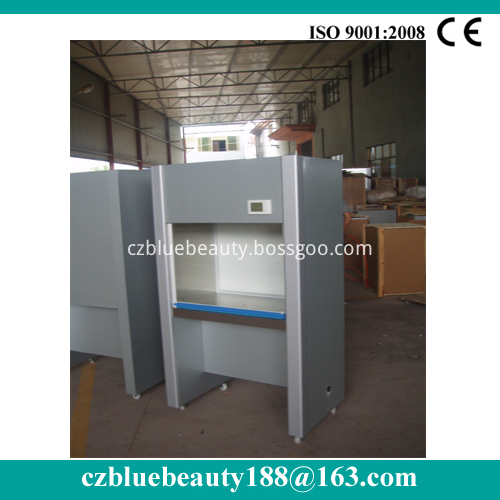Abstract: This paper introduces the working principle of the high pressure pneumatic valve, the main structural design calculation and test conditions, and analyzes the structural characteristics of the valve. Keywords: EHV pneumatic valve valve seat design 1, the introduction of high pressure pneumatic valve is an important component of the pneumatic brake system. Because the gas viscosity is small, easy to leak, and high system pressure, the valve input pressure of 11 ~ 13MPa, the maximum output pressure of 7MPa, so the valve sealing and durability become outstanding problems. The ultra-high-pressure pneumatic valve introduced here breaks through the traditional structure [1] and optimizes the important zero and components so that the valve does not leak under high pressure. Other properties also meet the requirements. 2, the working principle of high pressure pneumatic valve working principle shown in Figure 1. When the pressure head has no external force, the gas from the gas source enters the lower gas chamber of the valve body through the input port. The gas inlet valve is compressed with the inlet valve seat under the action of the gas pressure and the return spring, and no gas is output from the valve output port. When the pressure head by the external force F, the pressure head down, through the balance spring compression return spring 1, the exhaust valve is pressed and exhaust valve seat contact, the output port is isolated from the atmosphere, the pressure head to continue down, the top open Intake valve, compressed air from the intake valve control channel into the valve behind the actuator cylinder. As the cylinder pressure increases, the intake valve opening gradually decreases until the output port pressure p2 and pressure head on the force balance when the intake valve is closed. When the external force is removed, the intake valve in the air pressure and return spring 2 force up, closed. In the meantime, the pressure head and the exhaust valve are reset by the force of the return spring 1 and the exhaust pressure, the exhaust port is opened, and the original output gas is discharged into the atmosphere through the exhaust valve through the silencer. Figure 1 Schematic structure of the work Now let's look at the exhaust valve in a balanced position when the state. Ignoring the pressure head, exhaust valve and other gravity and friction, exhaust valve force balance equation: F = p1A1 + p2 (A2-A1) + Fs + Ff (1) Where: Fs ?? Ff is the friction force of the seal ring; A1 and A2 are the effective pressure area of ​​the inlet and exhaust valves, respectively, A1 = π (d12-d012) / 4 and A2 = π (d22-d022) / 4; d ?? exhaust valve seat diameter; d01 ?? mandrel lower section diameter; d02? Ejector section diameter. From equation (1), the output pressure p2 of the valve is proportional to the force F on the ram (see Figure 4). 3, design and calculation of design EHV pneumatic valve is generally based on the first given the design parameters and working conditions, select the valve structure type, and then the choice of structural parameters and calculations. Usually given parameters are: air pressure, the maximum output pressure of the valve, ventilation capacity, the maximum control and travel and so on. Design and calculation of the content: the structure of the selected type, according to the ventilation capacity and pressure to determine the size of the valve structure, according to the stroke and the manipulation of balance springs and other design. Valve structure design focus on the intake valve, exhaust valve and valve seat seal structure, because the gas viscosity, and high pressure, easy to leak. Valve structure shown in Figure 1. (1) Calculation of ventilation capacity The ventilation capacity of the valve refers to the inflation and deflation time of the valve, given the pressure of the air supply, the output pressure of the valve, and the volume of the pipe after the actuator cylinder and the valve. Ventilation capacity depends on the area of ​​the intake and exhaust passages. Valve inflation and exhaust in a very short time, we ignore the impact of heat exchange, adiabatic inflation and adiabatic exhaust. In addition, depending on valve operating pressure, the valve is aerated and sonicated at a speed of sound. Therefore, the effective inlet area of ​​the valve Aa calculated by the following formula: Where: V total volume of inflation; K specific heat ratio, adiabatic inflation, K = 1.4; T air temperature, the standard Air temperature T = 293.15K; t1 ?? inflation time; R ?? gas constant, R = 287.1N * m / kg / K; p1? Valve inlet pressure; p2 ?? valve outlet pressure; p20 ?? Pressure in the cylinder before inflation begins. ∵A1 = Aa ∴According to the structure (see Figure 1 and Figure 2), the inlet diameter according to the principle of equal area, the axial distance between the inlet valve and the valve seat (opening) hc≥ (d12-d012) / (4d1) (4) The effective area of ​​deflation passage is calculated as follows: t2 ?? exhaust time; p20 ?? initial pressure of the cylinder exhaust; pa? External pressure. Other symbols with the same meaning (3). Deflation hole diameter (see Figure 1 and Figure 2) Deflation valve and the valve seat axial distance (opening) h2 ≥ (d22-d022) / (4d) (7) (2) exhaust valve seat diameter calculation Valve works know that the size of the exhaust valve seat diameter d directly affect the valve pressure regulator accuracy. If the diameter is large, the valve pressure regulator accuracy is high; the other hand, the valve pressure regulator accuracy is low. However, the exhaust valve seat diameter in turn by the manipulation of force constraints. Exhaust valve seat diameter (see Figure 3 (b)) can be obtained by type (1) Where: Fmax ?? given the maximum operating force. In the premise of meeting the value of the pilot force, the exhaust valve seat diameter as much as possible. (3) into the exhaust valve design into the exhaust valve design include the structure type, material selection and the determination of geometric dimensions. Valve structure using metal encapsulated valve (the so-called metal encapsulation valve is the rubber directly vulcanized in the metal skeleton). It takes advantage of the high elasticity of the rubber material and the pressure ratio of the seal, so that the valve in the work process has a good compensation function; the other to take advantage of the strength and stiffness of the metal material. Valve manufacturing process is good, low manufacturing costs. The choice of rubber material is mainly based on its mechanical properties and valve operating temperature. The thickness of vulcanized rubber according to the height of the valve seat surface h selection, rubber compression (20 ~ 25)% is appropriate. Into the exhaust valve metal skeleton should brass, because of its combination with the rubber performance. (4) inlet and outlet valve seat surface design Valve seat surface and the valve rubber surface in direct contact with the deformation of the plastic surface during the work, play a sealing effect, but also a great impact on the life of the valve. Valve seat surface structure shown in Figure 2 (of which: Figure 2 (a) for the intake valve seat, Figure 2 (b) for the exhaust valve seat). The height h range for the valve seat surface, R for the sealing surface. R value is small, valve sensitivity is high; R value is large, valve life is long. The optimized design, R in the range of 0.3 to 0.5 values ​​better. Valve seat surface roughness also affects the valve sealing and life expectancy, roughness Ra should not exceed 0.4μm in Figure 2 b for the bearing surface. It is used to limit excessive deformation of the plastic surface, play a role in protecting the plastic surface. (5) balance spring design According to the valve performance analysis, balanced spring and exhaust valve seat diameter, directly affect the valve pressure regulator accuracy. The lower the stiffness of the decompression spring, the better the pressure regulation accuracy of the valve. But the stiffness is too small, the spring travel is too long. It is subject to a given travel limit and the spring rate should be designed according to the given parameters: k = Fmax / (h1 + h2) (9) Spring design is possible with spring stiffness, spring force and travel. The stiffness of the two return springs can be designed to be the same, and their stiffness is less than that of the balance spring. 4, the test valve performance test, design test system schematic shown in Figure 3. Valve output pressure and the relationship between the manipulator shown in Figure 4. Fig. 5 shows the charge and discharge characteristics of the valve in a case where the cylinder capacity is 2 L, the input pressure is 11 MPa, and the operating force is quickly applied (removed) to the indenter. After testing and application, the valve of the technical performance to meet the requirements, some indicators over similar products. And has a simple structure, compact, small size, light weight, long life, good maintainability and so on. Fig.2 Structure of the valve seat surfaceFig.3 Schematic diagram of the test systemFig.4 Relationship between p2 and FFig.5 Filling and venting characteristics References: 1 [Su] NNVivilev, CC Cohen, Deng Qiming et al Beijing Aviation Industry Press, 1980 2 Xu Wencan. Calculating the characteristics of charge and discharge according to the international standard draft. Hydraulic and Pneumatic, 1985 (4) 3 Machine Tool Institute of the First Machinery Industry, Shanghai University of Technology. Mechanical Engineering Handbook 36th chapter pressure transmission. Beijing: Mechanical Industry Press, 1979
Laminar Flow Cabinet is make local air environment with high degree of cleanliness, equipment, air flow for horizontal and Vertical Laminar Flow in two forms. It is widely used in the semiconductor industry, precision instruments, meters, electronic components, optical instruments, chemical industry, smelting purification, magnetic materials, microbial research, medicine and health care, scientific research departments and so on. To improve the product yield, precision, stability, reliability, has a significant role.
|
Parameter\Model
|
SW-CJ-1D
|
SW-CJ-2D
|
|
Clean grade
|
100 Grade@≥0.5μm (209E)
|
|
Number of bacteria
|
≤0.5 per utensil.hour (¢ <90mm> utensil)
|
|
Average wind speed
|
0.3~<0.6m>/s (adjustable)
|
|
noise
|
≤62dB
|
|
Half peak value of shaking of shaking
|
≤5μm
|
|
Illumination
|
≥300Lx
|
|
Power supply
|
AC single-phase 220V/50H
|
|
Max. power consumption
|
0.4KW
|
0.8KW
|
|
Weight
|
85kg
|
150 kg
|
|
Dimension of working area
|
700×500×500(W×D×H)mm
|
1300×570×1600(W×D×H)mm
|
|
Overall dimension
|
850×570×1550(W×D×H)mm
|
1150×500×500((W×D×H)mm
|
|
Specification and number of high effective filter
|
760*610*50*
|
610*610*50*
|
|
Specification and number of light from firefly/ ultraviolet light
|
20W*
|
30W*
|
|
Suitable number
|
Single
|
Double
|



Vertical Laminar Flow
Vertical Laminar Flow,Laminar Air Flow ,Vertical Laminar Flow Hood ,Vertical Flow Hood
Cangzhou Blue Beauty Lab Instrument Co., Ltd. , https://www.czlabinstrument.com


